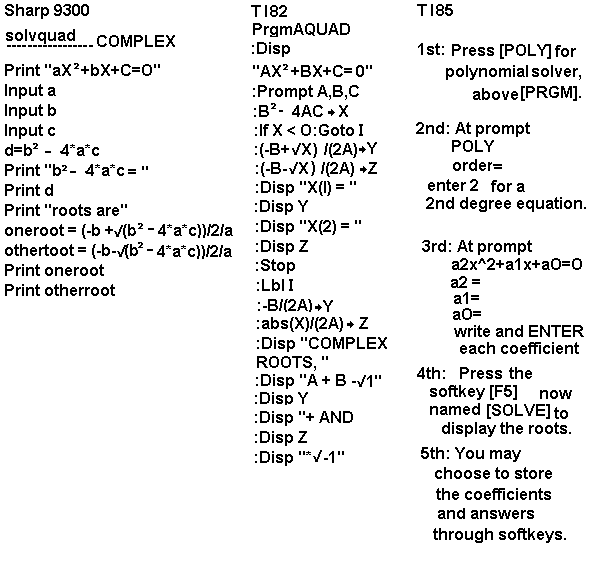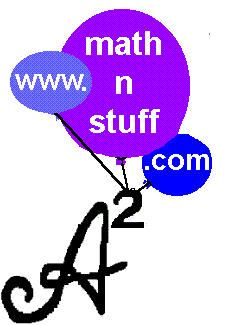![[Top]](http://www.mathnstuff.com/gif/top.gif) 9. written word 10. written symbol
9. written word 10. written symbol
|
© '98, Agnes Azzolino |
written word |
written symbol |
semisymbolic |
calculator symbol |
![[Top]](http://www.mathnstuff.com/gif/top.gif) 9. written word 10. written symbol
9. written word 10. written symbolThe written word codes the mother tongue, other tongues, formal mathematics, and informal mathematics. The written symbol also codes these. Alone each is a powerful tool. Together their power is magnified.
In the math classroom situation the written word is found most often in the text in paragraph or word problem form. The traditional uses of the written mathematics languages have been:
In the math classroom situation the written symbol is found most often on the board in line-by-line coding of the solution of a problem. Traditional uses of the written mathematics languages have been:
Fortunately, that is changing. Math teachers have opted for "chalk & talk" over "just talk" - "written & verbal" over "written." They have begun to employ strategies championed by the critical thinking and writing-to-learn movements. Math teachers have begun to expreiment with longer written execises and the use of technology in place of more symbol-manipulating exercises.
These efforts are to be applauded. The simultaneous, bilingual if you will, communication of mathematics in more than one language and more than one language family is even more powerful and useful than communication in only one language.

![[Top]](http://www.mathnstuff.com/gif/top.gif) 11. semisymbolic
11. semisymbolicThis is a term coined by the author to represent a transitional stage from the written word to the written symbol. Please examine it through the page entitled The Semi/Pseudo Expression/Equation", the page which follows this one.
![[Top]](http://www.mathnstuff.com/gif/top.gif) 12. calculator symbol
12. calculator symbol

| [Table of Contents] | [Top of the Page] | [Last Page] | [Next Page] |
| [Verbal] | [Written] | [Pictorial] | [Concrete] |
| [written word] | [written symbol] | [semisymbolic] | [calculator symbol] |


Verbal, Written, Pictorial, and Concrete (the Hundreds Board, for example) are the four broad mathematics language families discussed in this electronic monograph found at www.mathnstuff.com/papers/langu/page0.htm and additional pages (ISBN: 1-929-870-01-9 © 1998, Agnes Azzolino).
![[MC,i. Home]](http://www.mathnstuff.com/math/spoken/here/1gif/mcihome.gif)
![[Table]](http://www.mathnstuff.com/math/spoken/here/1gif/table.gif)
![[Words]](http://www.mathnstuff.com/math/spoken/here/1gif/words.gif)

![[this semester's schedule w/links]](http://www.mathnstuff.com/gif/semestr.gif)
![[Good Stuff -- free & valuable resources]](http://www.mathnstuff.com/gif/goods.gif)
![[next]](http://www.mathnstuff.com/math/spoken/here/1gif/next.gif)
![[last]](http://www.mathnstuff.com/math/spoken/here/1gif/last.gif)
© 2005, Agnes Azzolino www.mathnstuff.com/math/spoken/here/papers/langu/page6.htm |